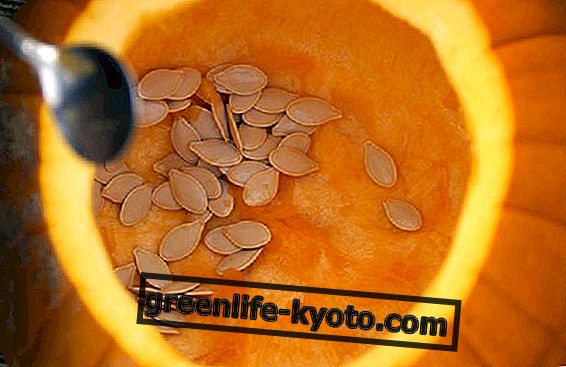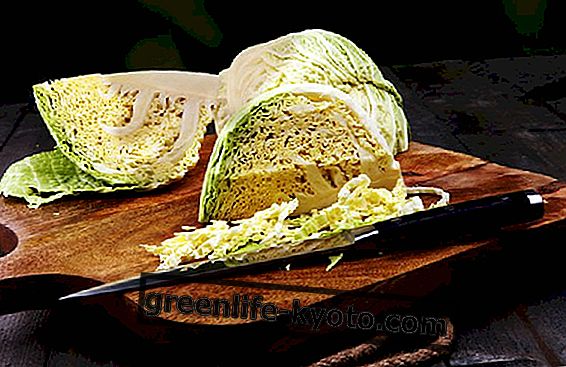
Let's call it by its "legal" name, that is, a soy drink, which - it was established in this way - milk is only what the mammary glands of animals produce. In any case, definitions aside, soy is an important legume for the diet of vegetarians, vegans and curious omnivores: rich in proteins but free of cholesterol, it is versatile in the kitchen and produces various products.
Soy also contains vegetable substances that are not nutrients, such as isoflavones, or plant hormones .
So can soy milk cause hormonal imbalances ? Let's try to understand more.
Soy milk and hormonal variations: why?
Let's start with a fact: to date, according to the scientific community, there is no evidence of damage to health deriving from the consumption of soy "milk", neither on the healthy population nor on individuals with diseases, the only exception, of course, are the subjects with a soy allergy itself.
Why then do we associate soy and its derivatives with the risk of hormonal variations ?
Soy is rich in isoflavones (an important class of phytoestrogens or plant hormones): about 25 milligrams per 100 grams. The scientific literature speaks of doses equal to 40-60 mg a day of isoflavones from foods to have beneficial effects and not more than 80 mg a day of isoflavones from supplements.
Phytoestrogens are substances of plant origin with a chemical structure very similar to that of estrogens (female hormones) and therefore can behave in a similar way to these hormones, due to their shape.
In fact, all the hormones, in order to function, bind to other molecules (receptors) with which they create a complex (similar to the key-lock link) that triggers a cascade of reactions. Phytoestrogen can also bind to the same estrogen receptor, but it cannot be said to trigger the same reactions.
The hormonal variations induced by the phytoestrogens of soy would thus be of two types, depending on the presence or absence of estrogen hormones:
> antiestrogenic effect: if there is an excess of estrogen hormones, the phytoestrogens replace the female hormones on the same receptor and inhibit their activity;
> estrogenic effect: if there is a lack of estrogen hormones, the phytoestrogens bind to the receptors and "mimic" the activity of the estrogens themselves, strengthening it.
Therefore the phytoestrogens of soy would act as a regulator of hormonal variations .
Soy "milk" and hormonal variations: are there any health risks?
Let us rely on facts and science:
Some studies carried out on cells and animals (mice) have led to the suspicion that there could be a worsening of the situation with hormone-sensitive tumor cells (such as some types of breast cancer) with the ingestion of soy isoflavones : in mice in which they were Sensitive estrogen human breast cancer cells were implanted, tumor growth was observed after isoflavone administration; in the same typology of mice it was also observed that by administering isoflavones the effect of the anticancer drug Tamoxifen was canceled.
This data, however, has been tested only in vitro and in vivo on mice, which metabolize isoflavones differently (compared to humans): in fact there are studies on women who say that phytoestrogens would enhance the effect of the drug.
Advising against the use of soy in women who have already had breast cancer is a subjective medical choice of precaution, given the lack of statistically significant data on the subject.
Here we refer to soy "milk" and not phytoestrogen supplements, which contain far higher doses. At the moment, for the adult population, there is no study that associates the daily use of a portion of soy a day with an increase in any type of disease or recurrence of those who have had breast cancer.
On the other hand, the pediatric population deserves further consideration, since there are some studies that highlight a different situation:
> A 2012 study by dr. Adgent, from which some evidence emerges that the early and prolonged administration of soy milk, probably due to the phytoestrogens (isoflavones) it contains, would induce an anticipation of menarche (first menstruation) in females
> A 2004 study by Dr. Morandi and Arnoldi at the Department of Agri-food Molecular Sciences, University of Milan shows that soybean milk formulas for infants show concentrations of isoflavones between 103 and 427 µg / g .
Therefore, in the case of children fed with soy-based products, the consumption of a single portion of soy drink corresponds to the intake of a quantity of isoflavones equal to or greater than the maximum recommended limit .
While for infants fed with soy-based formulations, the daily amount of isoflavones taken, in the first six months of life, is around 12.5-25.6 mg and can even be excessive .
In conclusion, with regard to the risk of hormonal changes caused by the consumption of "milk" of soy, in the case of adults there is no real concern, while great caution will be needed, and the advice of the pediatrician, as regards the feeding of the children and especially newborns .













